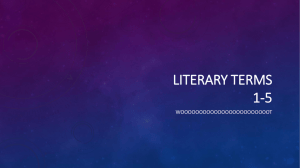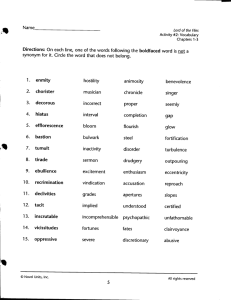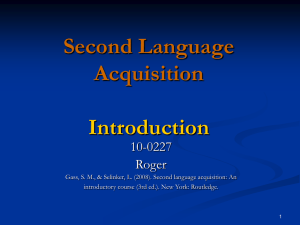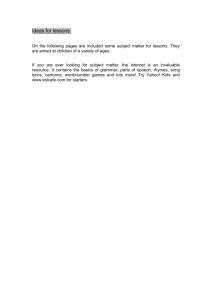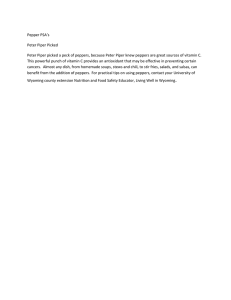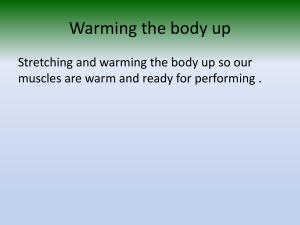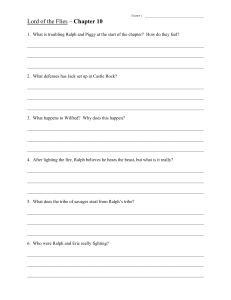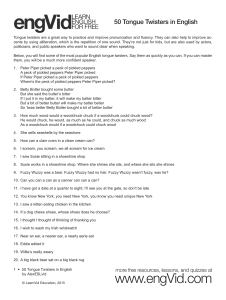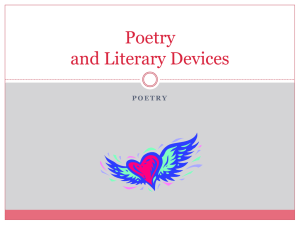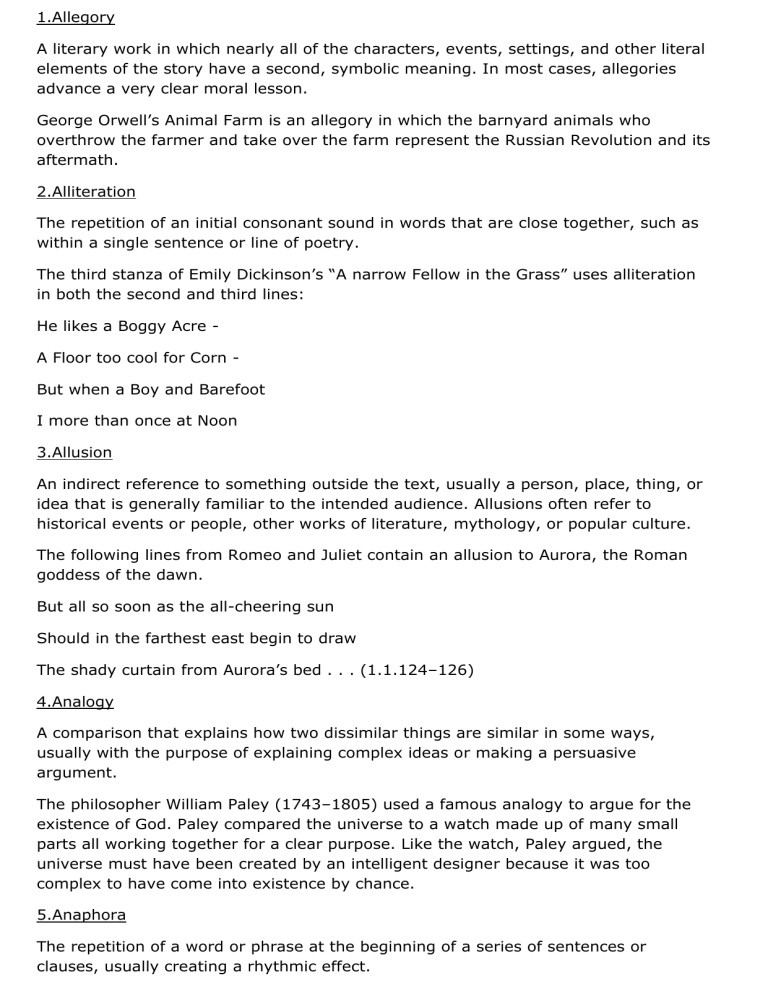
1.Allegory A literary work in which nearly all of the characters, events, settings, and other literal elements of the story have a second, symbolic meaning. In most cases, allegories advance a very clear moral lesson. George Orwell’s Animal Farm is an allegory in which the barnyard animals who overthrow the farmer and take over the farm represent the Russian Revolution and its aftermath. 2.Alliteration The repetition of an initial consonant sound in words that are close together, such as within a single sentence or line of poetry. The third stanza of Emily Dickinson’s “A narrow Fellow in the Grass” uses alliteration in both the second and third lines: He likes a Boggy Acre A Floor too cool for Corn But when a Boy and Barefoot I more than once at Noon 3.Allusion An indirect reference to something outside the text, usually a person, place, thing, or idea that is generally familiar to the intended audience. Allusions often refer to historical events or people, other works of literature, mythology, or popular culture. The following lines from Romeo and Juliet contain an allusion to Aurora, the Roman goddess of the dawn. But all so soon as the all-cheering sun Should in the farthest east begin to draw The shady curtain from Aurora’s bed . . . (1.1.124–126) 4.Analogy A comparison that explains how two dissimilar things are similar in some ways, usually with the purpose of explaining complex ideas or making a persuasive argument. The philosopher William Paley (1743–1805) used a famous analogy to argue for the existence of God. Paley compared the universe to a watch made up of many small parts all working together for a clear purpose. Like the watch, Paley argued, the universe must have been created by an intelligent designer because it was too complex to have come into existence by chance. 5.Anaphora The repetition of a word or phrase at the beginning of a series of sentences or clauses, usually creating a rhythmic effect. Martin Luther King, Jr. used anaphora frequently in his “I Have a Dream” speech: “I have a dream that one day this nation will rise up and live out the true meaning of its creed . . . I have a dream that one day on the red hills of Georgia the sons of former slaves and the sons of former slave owners will be able to sit down together at the table of brotherhood . . . I have a dream that one day even the state of Mississippi . . . will be transformed into an oasis of freedom and justice.” 6.Antagonist A character or force in a story that opposes, or works against, the goals of the protagonist (main character). In Shakespeare’s Othello, the villainous Iago serves as the antagonist, abusing Othello’s trust in order to sabotage his happy marriage. 7.Antihero/Antiheroine A protagonist (main character of a story) who lacks heroic qualities such as integrity, courage, and morality. In J.D. Salinger’s The Catcher in the Rye, protagonist Holden Caulfield serves as an antihero, narrating his misguided and unsuccessful attempts to make meaningful personal connections in a society he largely despises. 8.Aphorism A brief, memorable statement that captures a broad, universal truth or idea. Benjamin Franklin’s Poor Richard’s Almanack contains many well-known aphorisms. Two of the most famous are: “Early to bed and early to rise, makes a man healthy, wealthy, and wise.” “God helps them that help themselves.” 9.Archetype A literary element that is common in stories from many different cultures and times and has similar, universally recognizable attributes. Archetypes include common character types (e.g., heroes, villains, tricksters), symbols (fire, water, light, darkness), themes, plotlines, or other elements. The hero archetype appears in stories from nearly every culture in human history. Archetypal heroes face certain universal challenges, such as unusual circumstances of birth, a traumatic event that initiates a dangerous quest, and a great trial that tests the hero’s character and results in a sort of rebirth. 10.Assonance Repetition of similar vowel sounds within words and phrases, commonly used for a lyrical effect in poetry and other literary forms. Emily Dickinson frequently used assonance in her poetry, as in the opening lines of her poem “Because I could not stop for Death”: Because I could not stop for Death – He kindly stopped for me – The Carriage held but just Ourselves – And Immortality. We slowly drove – He knew no haste And I had put away My labor and my leisure too, For His Civility – 11.Climax The point of highest tension in a story, in which the main conflict is faced and ultimately resolved. In William Golding’s Lord of the Flies, the climax occurs after Ralph and Piggy demand that Jack return Piggy’s stolen glasses. When Jack’s tribe kills Piggy and forces Ralph to flee into the jungle, it becomes clear that Jack has triumphed over Ralph in their struggle for supremacy on the island. 12.Conflict The central struggle that drives the plot of a story or, more generally, any struggle between opposing forces in a story. Literary scholars often classify conflicts as internal, in which a character struggles with some internal dilemma, or external, in which a character struggles against outside forces like nature, other characters, or supernatural forces. In William Golding’s Lord of the Flies, the main conflict pits the protagonist, Ralph, against the antagonist, Jack. Throughout the story, the two boys compete to become the dominant leader of the boys stranded on the island, with Ralph embodying the rules and order of civilization and Jack the opposing tendency toward terror and violence. 13.Consonance The repetition of one or more consonant sounds in words that are close together, such as within a single sentence or line of poetry; may include both initial consonant sounds (alliteration) or sounds within words. The following famous tongue-twister comes precariously close to using consonance in every word. Peter Piper picked a peck of pickled peppers; A peck of pickled peppers Peter Piper picked; If Peter Piper picked a peck of pickled peppers, Where's the peck of pickled peppers Peter Piper picked? 14.Couplet In poetry or verse, a pair of consecutive lines of poetry that form a complete thought, usually rhyming and having the same meter and sometimes placed in their own stanza. A Shakespearian sonnet is a fourteen-line poem consisting of three quatrains (fourline stanzas) followed by a rhyming couplet that often concludes the poem with an unexpected twist. For example, the couplet below concludes a sonnet in which the speaker mostly laments the fact that age will someday degrade his lover’s beauty. “This” in the first line refers to having a child through whom one’s own lost beauty can live on. This were to be new made when thou art old, And see thy blood warm when thou feel’st it cold. (from Sonnet 2: “When Forty Winters Shall Besiege Thy Brow,” by William Shakespeare) 15.Dramatic Irony A literary device in which one or more characters in a story remain unaware of plot developments that have already been revealed to the audience, giving rise to humor, suspense, or double meanings. Shakespeare uses dramatic irony to create tension and humor throughout Othello. Iago, the play’s villain, frequently reveals his diabolical schemes to the audience in monologues and asides, out of the hearing of Othello and his other unwitting victims, who for some reason seem to trust him absolutely.
